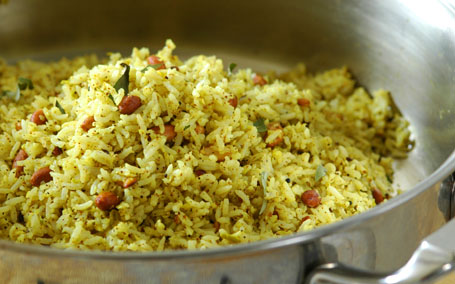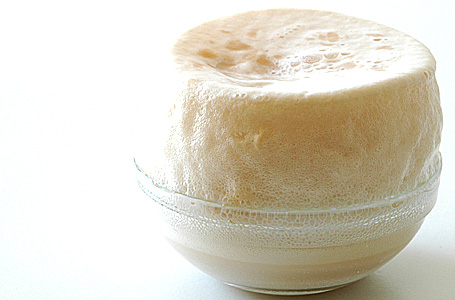I started out my weekend with a plan. The plan was to prepare the famous Andhra mango pickle, ‘avakaya’, for next week’s JFI. You know about pickles. To prepare and present it, you need to make it at least one week in advance. So, I went to Pittsburgh and picked out the greenest mangoes available at one of the Indian grocery stores. The mangoes were very green and hard and so I was confident that they were unripe. On Sunday, I was in full pickle making mode. Cleaned out the kitchen, dried out any signs of moisture from counter tops and prepared all the essentials – mustard seed powder and red chilli powder. I was all ready to make pickle. But alas…
As often happens with the best laid out plans, things went awry. In this case, green, hard and thought to be unripe mangoes, when cut open, were ripe inside. The flesh was pale yellow and the taste was not very sour. I had to drop my plan to make pickle. Instead of going down the path of questioning my life in US, where I can’t even prepare my favorite pickle, I picked up my spirits and quickly found a use for my not so green, not so ripe mangoes. I remembered Mika’s comment about her way of preparing mango rice with coconut and also her recently blogged mango rice recipe. I had all the ingredients, including a fresh, decent coconut. Viola… the life in US looked much better.:)
I tried out the mango pulihora with coconut and mustard powder. Between the tangy sweetness of mango+coconut and the sharp, zesty flavor of mustard+chillies, the taste of pulihora was so unique and irresistible. I was glad that I tried this recipe, this one is a keeper. Thanks Mika.

Fresh coconut, Green Unripe Mango, Mustard Seeds and Green Chillies
Recipe:
(steps written in order of preparation)
Cook Rice:
1 cup of rice in 2 cups of water.
(I prepared it with Sona Masuri Rice)
Finely Powder:
2 teaspoons of mustard seeds – using a spicemill or coffee grinder
Make a Paste:
1 medium sized green unripe mango – peeled and cubed
½ cup of finely chopped fresh coconut
8 to 10 small green chillies

Grinding the mango, coconut and green chillies
Heat and Toast:
1 teaspoon of peanut oil, in a big sauté pan.
¼ cup of peanuts to golden brown color and remove.
Do the Popu or Tadka:
Add another teaspoon of oil or ghee to the same pan. Do the popu by toasting one teaspoon of each – cumin, mustard seeds, urad dal, chana dal, few pieces of dried red chillies and curry leaves.

Sauteeing the ingredients
Add and Sauté:
To the popu, add the
Mustard seed powder,
Smooth mango-coconut-chilli paste,
1 teaspoon of turmeric and salt.
Stir and sauté this mixture for 3 to 5 minutes on medium heat, until the mango paste leaves its raw smell. Don’t overcook, that would kill the precious mango flavor completely. Stir in the toasted peanuts that were kept aside. Switch off the heat.
To this sautéed mixture, add the cooked rice. Mix thoroughly and serve. The pulihora should taste little bit tartly because of unripe mango, sweet due to coconut, spicy strong because of chillies and mustard powder.

Mango-Coconut Pulihora
Mango Pulihora – Andhra Style


 I’ve decided to try some new recipes and feature some of my old favorites with mangoes. This is one of the recipes that I selected to write about.
I’ve decided to try some new recipes and feature some of my old favorites with mangoes. This is one of the recipes that I selected to write about. 






























